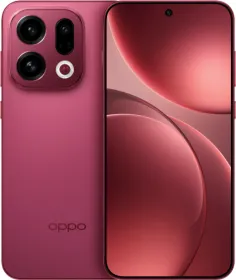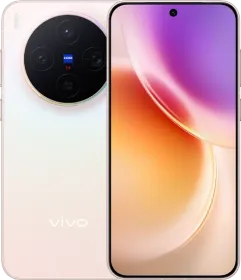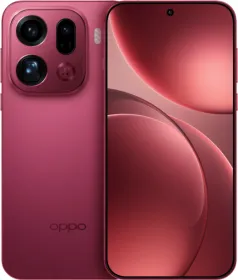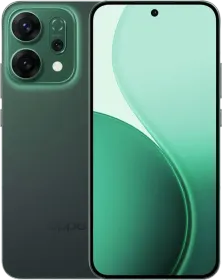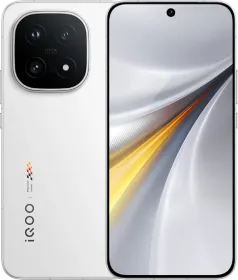After using the OPPO Find X9 for more than two weeks, it became clear that this is not a typical year-over-year refresh. It fixes many of the quirks from the Find X8, changes the ergonomics, introduces a new camera system built around the LYT808 sensor, and brings a surprisingly refined balance between compactness, battery life, and camera performance.
At the same time, it carries some unusual trade-offs for a flagship in its price range. There is still no LTPO panel, the USB port is limited to 2.0 speeds, and the telephoto lens lacks the telemacro capability I expected at this price. So the Find X9 is more of an intentional repositioning than an all-out flagship push.
But the Find X9 is launching at a premium price. The 12GB + 256GB model is priced at ₹74,999, while the top-end 16GB + 512GB variant comes in at ₹84,999. At this price, it competes against phones with LTPO displays, faster USB speeds, stronger gaming performance, and in some cases, telemacro setup.
So the natural question is whether the trade-offs matter in daily use and where the Find X9 truly fits. Let’s find out in my detailed review of the OPPO Find X9.
OPPO Find X9 Price & Availability
The Find X9 starts at ₹74,999 for the 12GB + 256GB configuration and ₹84,999 for the 16GB + 512GB model, which is the one I have been testing.
In terms of colors, Titanium Grey and Space Black are available. The phone is available across major online platforms, OPPO Experience Stores, offline retailers, and OPPO e-store.
Pros
- Comfortable size and weight
- Crazy thin 1.15mm bezels
- Excellent portraits
- Strong battery life
- Reliable cameras
- Excellent software experience
- Good performance
- IP68 + IP69 rated
- Fast charging
- Good speakers
- Packed with AI features
Cons
- No LTPO
- USB 2.0 speeds
- No telemacro
- Ultra-wide drops detail in low light
- No AF on the selfie camera
OPPO Find X9 Specifications
- Display: 6.59-inch Tianma AMOLED (2760 x 1256), 120 Hz refresh rate, Dolby Vision, HDR10+, 3600 Nits peak brightness, 1800 Nits HBM, 3840 Hz PWM dimming, 1.15 mm uniform bezels
- SoC: MediaTek Dimensity 9500 (3 nm; Arm G1 Ultra GPU)
- RAM: 12/16 GB LPDDR5X
- Storage: 256/512 GB UFS 4.1
- Cameras:
- Main Camera: 50 MP Sony LYT808, 1/1.4-inch, f/1.6, OIS, AF, 50 MP default output, 4K30/60/120
- Ultra-wide Camera: 50 MP, 1/2.76-inch, f/2.0, AF, macro, 4K30/60
- Telephoto Camera: 50 MP Sony LYT600, 1/1.95-inch, f/2.6, 73 mm, 42cm MFD, OIS, AF, 3X optical zoom, no telemacro, 4K30/60
- Front Camera: 32 MP Sony IMX615, 1/2.74-inch, f/2.4, 21 mm, fixed-focus, 4K30/60
- Speakers: Dual stereo speakers
- Battery and Charging: 7,025 mAh silicon-carbon, 80W SUPERVOOC, 55W PPS, 50W AIRVOOC wireless, reverse wireless charging
- Build: Aluminum frame, glass back, IP66 + IP68 + IP69 certified
- Connectivity: 5G, Wi-Fi 7, Bluetooth 6.0, NFC, USB 2.0, eSIM support, 4 mics
- Biometrics: 3D ultrasonic fingerprint scanner, face unlock
- Weight and Dimensions: 203 grams; 7.99 mm thickness
OPPO Find X9 Review: Design and Build

The first impression the Titanium Grey variant gives is subtle and understated. The texture is matte with a fine nano-etched finish that keeps fingerprints practically invisible. It has a smooth ceramic-like feel that never becomes slippery in hand.
The Find X9 weighs 203 grams and measures just 7.99 mm in thickness. Despite housing a massive 7,025 mAh battery, the phone still feels surprisingly light and balanced.

OPPO has completely redesigned the back this year. The traditional circular camera ring is gone and replaced with a rectangular module on the top left. It aligns perfectly with the flat frame, making it look nice. There is something refreshing about this design.

The flat-edged frame maintains the boxy aesthetic the brand began exploring last year, but the soft curvature on the inner edges keeps it comfortable to hold. Titanium Grey, in particular, has a cool-to-touch metal finish that adds to the premium feel.

OPPO also introduced a new Snap Key on the side, replacing the Alert Slider. It is a physical button that can be customized to perform multiple actions. I’ve set it to save content to Mind Space and open it. You can also set it to toggle between Mute/Silent/Ring or even activating the flashlight or taking a screenshot.

The Find X9 is certified for IP66, IP68, and IP69. That means resistance to dust, submersion up to 1.5 meters, and high-pressure hot-water jets reaching 80°C (not sure why anyone would need that realistically but it’s there).
OPPO Find X9 Review: Display

The Find X9 uses a 6.59-inch 1.5K AMOLED panel with symmetrical 1.15 mm bezels, and that is one of the first things I noticed. The bezels are truly uniform on all sides, perfectly even, and among the thinnest I have used. It makes the front appear uninterrupted, almost like an all-screen slab.

The panel’s dimensions make the phone feel compact without feeling too small for some people. It is a comfortable size for most users while still offering enough viewing area for media and gaming.
Peak outdoor brightness hits 3600 Nits and 1800 Nits in HBM. In practical use, the visibility outdoors is excellent. Under direct sunlight, the screen remains readable without the washed-out look common in other panels.

The 120 Hz refresh rate is smooth across the UI, and OPPO’s motion tuning keeps the animations fluid. However, due to the lack of LTPO, there’s no support for full-screen always-on display for more than 10 seconds.
The display supports Dolby Vision, HDR10+, and HDR Vivid. Color accuracy is solid, with full DCI-P3 coverage and 10-bit depth.

Where the Find X9 really does very well is comfort. It can dim down to 1 Nit for night use, and the 3,840 Hz PWM dimming significantly reduces flicker at lower brightness. I used the device for long durations at night, and experienced no eye strain.
Overall, the only real drawback here is the lack of LTPO. The screen cannot reduce itself to 1 Hz for static content, which is not acceptable at this price. But apart from those omissions, the display quality is excellent, with brightness, uniformity, and viewing comfort being the standout strengths.
OPPO Find X9 Review: Speakers and Haptics

The audio setup on the OPPO Find X9 is really good, designed more for clarity and balance than raw loudness. Even at maximum volume, the speakers maintain a controlled output that doesn’t collapse or rattle.
Haptics are strong, tight, and well-integrated throughout the OS. OPPO has further refined the vibration motor this year, and you can definitely feel it on the Find X9. While these aren’t at the level of the very best Android phones, they’re still excellent and noticeably better than the average flagship.
OPPO Find X9 Review: Software

ColorOS 16 on the Find X9 feels amazing. What stood out most wasn’t just the speed but also the overall smoothness and coherence of the UI. Animations feel consistent across the system, which is something ColorOS 16 improves upon.
One of the best aspects of this phone, and something users will appreciate immediately, is that there is minimal bloatware this time (compared to the X8 Pro). OPPO has shipped the Find X9 with a clean setup. It truly now feels like a flagship software experience.
OPPO AI

ColorOS 16 introduces a newer set of AI features too. Mind Space continues to be the highlight. It works like a personal memory vault, capturing content with the Snap Key or gestures (three finger swipe up) and organizing it automatically. It’s also integrated with Gemini, so you can now access Mind Space content using Gemini as well.

Circle to Search is built in, letting you circle anything on the screen to pull up instant results without switching apps. The AI Recorder has been upgraded to handle live transcription, label different speakers on its own, and produce quick summaries once the conversation wraps.
In the Photos app, OPPO has added AI Portrait Glow to fix uneven or low lighting in portrait shots, with a slider that lets you control how strong the adjustment looks.
AI Scan helps manage your documents by straightening edges, removing shadows, and turning notes or whiteboards into clean images or PDFs. The Find X9 carries all the AI features of previous models and the software versions too.

This includes AI Eraser, Reflection Eraser, AI 4K Clarity, AI Unblur, AI Summary, AI Speak, AI VoiceScribe, AI Perfect Shot, AI Recompose, the AI Translate app, AI Notes with mind maps and tighter syncing, AI Writer for posts or messages, and the rest of OPPO’s AI pack.
And because the OPPO-Developed Private Computing Cloud handles processing securely, your data remains encrypted whether it’s stored locally or synced to the cloud, at least that’s what OPPO says.
OPPO has also integrated Motion Cues, called Vehicle Motion Alerts here, to help reduce car sickness. Subtle animations appear along the edges of the display while the phone detects movement, and they do make a difference if you’re sensitive to screen usage in moving vehicles. Eye distance and blinking reminders have also been added.

The Find X9 gets 5 years of OS updates and 6 years of security patches, which is a great promise. Overall, the software experience on the OPPO Find X9 is the best among the standard flagship smartphones this year.

ALSO READ: ColorOS 16 review: I Tested it on the Oppo Find X9 Pro, and it’s a Perfect Match for the Hardware
OPPO Find X9 Review: Biometrics

The Find X9 upgrades from an optical fingerprint sensor to a 3D ultrasonic sensor, and this one is noticeably better. Even with wet fingers, the sensor can recognize and unlock the device. It’s positioned at a comfortable height, unlike the older Find X8 where the scanner sat unnecessarily low.
OPPO Find X9 Review: Performance

The performance on the Find X9 has been consistently stable. It runs on the MediaTek Dimensity 9500, built on TSMC’s 3 nm process. The new Arm G1 Ultra GPU handles graphics performance, paired with LPDDR5X RAM and UFS 4.1 storage. My experience has been smooth across everyday apps, multitasking, and gaming too.
The Dimensity 9500 is not as powerful as the Snapdragon 8 Elite Gen 5 in peak performance, and the difference shows in certain scenarios, but the sustained performance here is genuinely impressive. Here are some benchmarks:
| Benchmark Test | Score / Result |
| AnTuTu v11.0.4 | 3,59,056 |
| AnTuTu Storage Test | 147,806; Sequential Read: 4027 MB/s; Sequential Write: 3493 MB/s |
| Geekbench 6 (CPU) | Single-Core: 3219; Multi-Core: 9032 |
| Geekbench 6 (GPU – OpenCL) | 23,496 |
| Geekbench 6 (GPU – Vulkan) | 27,491 |
| 3DMark Wild Life Extreme Test | Score: 6940; Average FPS: 41.74 |
| 3DMark Wild Life Extreme Stress Test | Best Loop: 6996; Lowest Loop: 3657; Stability: 52.3% |
For gaming specifically, the Find X9 can easily handle popular titles. BGMI runs at 120 FPS right now and the gameplay is excellent. Genshin Impact stays at a stable 60 FPS in most situations, even during some intense flights.

Wuthering Waves also stays at 60 FPS and surprisingly does not trigger thermal throttling during longer sessions. The balance between performance and efficiency is the strongest part of the Dimensity 9500.
OPPO Find X9 Review: Cameras

After more than two weeks of shooting with the OPPO Find X9, I can comfortably say that the camera system is the part of this phone I ended up analyzing the most. Not because it is flawless, but because OPPO has approached imaging this year with a mixture of meaningful sensor upgrades and a few confusing decisions.
(Note: We are still updating the review with camera samples. Please check back later.)
Main Camera
The Find X9 uses three 50 MP rear cameras, but the biggest improvement is clearly the new LYT-808 main sensor. OPPO has increased the physical sensor size from last year’s 1/1.56-inch to a much larger 1/1.4-inch unit with an f/1.6 aperture. On paper, that means more light, better low-light performance, and less noise. And practically, most of that translates accurately into real results.





The Find X9 captures 50 MP default photos across all three lenses in most lighting conditions. In bright daylight, every rear sensor comfortably shoots in 50 MP mode. All cameras switch between 50MP, 26MP, 12MP depending on the lighting.
In very low light, all lenses drop to 26 MP or 12 MP. This switching happens dynamically and is clearly linked to OPPO’s computational system, including the LUMO Image Engine, which prioritizes detail while trying to reduce computational noise.



What is impressive is that even at 50 MP, the phone does not introduce shutter lag. Capturing large files usually creates a pause on most phones, but OPPO’s parallel imaging pipeline prevents that, so the shutter remains instant.
During daytime shooting, the LYT-808 main sensor consistently captures sharp, detailed photos with very wide dynamic range. Highlights are managed well, especially when shooting scenes with harsh sunlight.





I did notice some oversharpening in certain frames, especially when shooting complex textures like foliage or brick surfaces. It’s not a deal breaker, but it is visible if you zoom in.
Low-light performance on the main lens is also strong. Exposure is generally accurate, and highlights rarely blow out unless the light source is extremely concentrated.


Sometimes, the phone lifts shadows more than expected, which can introduce slight softness in dark areas. However, noise levels remain controlled, and the overall low-light output looks polished.
Ultra-wide
The ultra-wide camera uses a 1/2.76-inch sensor, which is smaller, but OPPO’s color calibration between the lenses is consistent enough that the overall look remains unified. In good light, ultra-wide photos are detailed with minimal distortion at the edges.






In low light, the lens begins to lose fine detail, and noise becomes visible. Ultra-wide macro shots look decent, and it is fine for flowers or similar kinds of photography.
Telephoto
The 3X telephoto lens is where things get interesting. OPPO continues using the LYT600 1/1.95-inch periscope sensor at 73 mm with an f/2.6 aperture. This is a solid hardware setup for the price no doubt.





The optical performance at 3X is excellent in daylight, producing clean results with natural depth and good contrast. The problem, however, lies in the focusing distance.




The 3X periscope focuses at roughly 42 cm. This is not close enough for telemacro shots. It should have been closer to 15 cm, which would have unlocked far more creative possibilities. You can still decent close-ups at 6X though.


Devices like the vivo X300 allow tight telemacro using their periscope lens, and the Find X9 doesn’t come close to that experience. Due to this long focusing distance, the phone often switches to the main sensor when you move too close to a subject. You need to go back and zoom in 6X or 10X to get a similar result.





Still, from 3X to 6X, the results look great. The background compression you get from this focal length is really good, giving portraits and objects a naturally cinematic appearance.










Beyond 10X, the AI becomes more aggressive. Up to 30X is usable, I would say.
Portraits




Portrait photography on the Find X9 is impressive. The edge detection is clean and precise, even around difficult areas like hair and textured clothing. The depth mapping feels more controlled this year. Background separation does not look artificial in most cases, and the transition blur is well done.



One of the best aspects is how natural the skin tones remain. When beautification is turned off, OPPO actually turns it off fully. There is no hidden smoothing or artificial texture being applied. Portrait mode allows you to zoom continuously from 1X to 3.6X, by the way.
Unique Shooting Modes
The Find X9 continues offering unique shooting modes such as Silhouette, Fireworks, and Stage. These modes behave as expected and provide interesting creative options. Snapshot Mode is excellent for capturing fast-moving subjects; it reduces motion blur significantly, thanks to the Lightning Snap Engine.








Live Photos
In Hasselblad Ultra-Clear Mode, Live Photos now capture in 4K resolution with 14 MP extraction for native focal lengths. Traditional Live Photos in standard mode still output at 2K and 8 MP. You can also convert any Live Photo into a slow-motion sequence, which is a neat addition for action shots.


Filters such as Neon, Cold Flash, and Warm Flash are available across multiple modes. Neon has been my personal favorite, especially for night and low light scenes. It adds a cinematic glow without turning the image artificial.
Front Camera
Selfies on the Find X9 are good, though not flawless. The front camera uses a 32 MP IMX615 sensor. In daylight, selfies have good dynamic range and accurate skin tones.




However, the lack of autofocus limits low-light performance, and you lose some of the crispness that you get on devices with AF front cameras. Still, the 21 mm field of view is wide enough for group shots without distortion, and overall quality is good.
Master Mode and XPAN
Master Mode receives a proper upgrade this year. The interface is cleaner and more intuitive, and OPPO finally gives users full manual control while maintaining a look. Shooting in RAW and RAW Max (JPG and JPG Max options are also there) delivers excellent detail retention with enough dynamic range for serious editing.




XPAN Mode has been revamped significantly. The interface now resembles an actual Hasselblad camera, with updated menus and a more immersive horizontal framing experience.

You also get six profiles now: Original, B&W, Fresh, Clear, Emerald, and Neon. The 65:24 aspect ratio works beautifully for landscapes, architecture, and cinematic compositions.




OPPO also reinstated the negative film processing animation when you click the shutter, which I am not a fan of. The XPAN crop option has been added inside the Photos app, letting you convert any photo into the XPAN aspect ratio if needed.
Videos

Video performance on the Find X9 is one of its strongest areas. The phone supports recording up to 4K120 on the main lens in both auto and Pro mode. Regular video recording at 4K60 is available across the entire camera system, including the front. Dolby Vision HDR is supported as well.
The stabilization is reliable, exposure transitions are smooth, and noise control is far better than I expected in complex lighting. The only time performance drops is in extreme low-light scenes on the 0.6X and 3X lenses.

Still, it remains one of the best video implementations I’ve used this year. Pro Video Mode replaces the older Film Mode and offers LOG recording on all lenses with ACES certification. You can shoot in 2.39:1 or 16:9, switch LUT previews on or off, and control all core parameters manually. This is a genuinely useful tool for creators.
You can finally switch between the front and rear cameras while recording video up to 4K60 now. Dual-view video remains limited to 1080p30 unfortunately. Cinematic Mode now records at 4K30 for both the front and rear cameras, which is a meaningful upgrade over last year’s 1080p limitation. The upgraded 4-mic array is also noticeable.

Overall, the Find X9’s camera system feels refined and balanced. It would’ve been perfect for this price if it had telemacro.
OPPO Find X9 Review: Battery Life and Charging

Battery life on the OPPO Find X9 is one of its biggest strengths. The phone packs a 7,025 mAh silicon carbon battery, and the efficiency of the Dimensity 9500 combined with ColorOS 16 tuning pushes the endurance even higher.
In my real world usage, the phone consistently delivered more than 11 hours of screen on time. This included social media, photography, browsing, some gaming, and general daily use. The battery drains very slowly during standby, which is a good thing. That’s actually impressive for a phone that’s slimmer than the S25 Ultra and the iPhone 17 Pro Max.

OPPO claims that the phone retains up to 80% of its battery capacity after five years of use, thanks to the silicon carbon chemistry and charging optimizations.
Charging speeds are also good. With the bundled 80W SUPERVOOC charger, the phone charges quickly, going from 10% to 100% in under an hour. There’s also 55W PD/PSS charging, 50W AIRVOOC wireless charging and reverse wireless charging support here.
Review Verdict: Should You Buy the OPPO Find X9?
After spending more than two weeks with the OPPO Find X9, my main takeaway is that this is a great flagship device for many users. If you want a compact flagship with excellent portraits, long battery life, dependable stabilization, and a clean ColorOS experience free of bloat, the Find X9 is a legitimate option.
If you care about telemacro photography, LTPO, faster USB speeds, waiting for the vivo X300 makes more sense. It checks those boxes, though it will be a smaller phone at 6.3 inches. At ₹74,999, the Find X9 is a well-rounded smartphone and it does many things well to become your new companion.

Smartprix ⭐ Rating: 8.7/10
- Design and Build: 9/10
- Display: 8.2/10
- Speakers: 8.6/10
- Software: 9/10
- Haptics: 8.5/10
- Biometrics: 9/10
- Performance: 8.3/10
- Cameras: 8.8/10
- Battery Life & Charging: 9.3/10
First reviewed in Novembeer 2025.






















